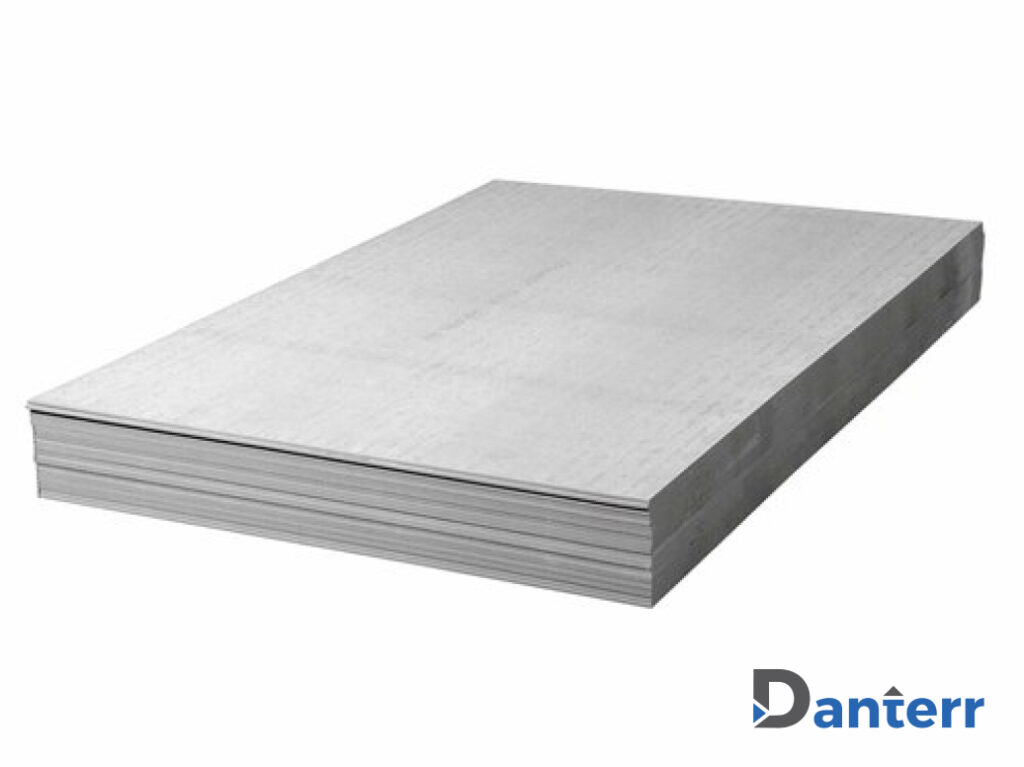Formwork is the backbone of concrete construction, ensuring structures achieve their intended strength, durability, and aesthetic appeal. At Danterr, we understand that the success of your project depends on the quality of the right formwork used. As a leading supplier of formwork solutions in Australia, we offer an extensive range of products designed to meet the diverse needs of construction projects. This guide will explore what formwork is, the various types available, Danterr’s innovative offerings, and how to choose the right formwork for your project.
What is Formwork?
Formwork refers to the temporary or permanent molds into which concrete is poured to achieve the desired shape and support until it sets. It plays a critical role in concrete construction, providing the necessary support, containment, and shape during the setting and hardening process. Historically, formwork has evolved from basic wooden molds to advanced systems made from a variety of materials, each offering unique benefits and applications.
Types of Formwork Systems
Traditional Timber Formwork
Traditional timber formwork is known for its versatility and affordability. It’s often used for its ease of use and flexibility in creating various shapes and sizes. However, it is labour-intensive and typically single-use, making it less sustainable and cost-effective for large projects.
Engineered Formwork Systems
Engineered formwork systems, including steel and aluminium options, are designed for reusability and precision. These modular formwork systems offer superior strength and durability, reducing labour costs and improving project timelines. They’re ideal for large-scale and repetitive projects.
Sacrificial Formwork
Sacrificial formwork, which remains in place after the concrete has been set, is used for applications such as permanent insulation and architectural finishes. This type of formwork offers additional benefits like improved thermal performance and enhanced aesthetic appeal.
Your Next Project, Simplified with Danterr!
Enter your email to explore our top-quality construction solutions. We’re here to support your project’s needs with innovative, sustainable products.
Catalogue Form
Danterr’s Formwork Solutions
At Danterr, we are dedicated to providing top-notch formwork solutions tailored to the specific needs of your construction projects. Our product line includes:
Circular Column Formwork
Circular Column Formwork offers a robust solution for constructing concrete columns both above and below ground. This system features a durable cardboard tube designed to facilitate the pouring of concrete, ensuring structural integrity and precise shaping. The columns can also serve as sturdy reinforcements in-ground to prevent soil collapse during excavation, maintaining their upright position whether used for in-ground or above-ground applications.
Enhanced for maximum durability, the outer surface of the columns is treated with a plastic coating, providing effective water resistance. Inside, an oil lining coats the tube to prevent concrete from adhering, ensuring a smooth, quick release once the concrete has set. This combination of features makes the Circular Column Formwork an efficient and reliable choice for creating concrete columns in various construction settings.
Formliner Products
Using Danterr’s formliners, transform ordinary concrete into exceptional architectural highlights. These versatile moulds imprint intricate designs that range from the elegance of natural stone to the rustic appeal of wood grain, offering limitless creative possibilities for any project.
- Zemfrasa Self Adhesive: Tailored for broad surfaces and specific tasks like circular steel formworks, this single-use, self-adhesive liner ensures a smooth or delicately textured finish that seamlessly integrates with any design aesthetic.
- ZEMDRAIN® MD: Celebrated for its practicality and commitment to sustainability, this reusable liner stands out for its multiple applications. Each use guarantees optimal moisture management and ideal curing conditions for the concrete. Its versatility allows for easy adaptation to various applications, from inclined to horizontal surfaces, making it a preferred choice for diverse construction needs.
Formwork plywood, commonly known as formply, features a radiata pine core with a high-density hardwood surface. This hardwood surface is coated with a high-density resin finish, typically black and very smooth. Formply is perfect for concrete formwork applications and offers the advantage of being reusable multiple times.
Sacrificial Formwork
With Danterr’s sacrificial formwork, which remains in place after the concrete has set, you can achieve permanent insulation and architectural finishes. This type of formwork offers additional benefits, such as improved thermal performance and enhanced aesthetic appeal.
- Sacraform™ is a preformed sacrificial formwork system combining mesh and plastic to provide a strong and reliable base for various structural elements under slabs. Sacraform™ is versatile, suitable for creating safety and site privacy screens, footings, ground beams, cages, penetrations, and more.
- Hy-Rib®: Elevate your building projects with HY-RIB® Formwork’s unparalleled efficiency. This advanced sacrificial formwork system is designed to enhance concrete adhesion and mechanical interlocking, ensuring the strength and durability of your structures.
Stremaform®
Stremaform® is a self-supporting, ‘stay in place’ formwork system ideal for forming construction joints, expansion joints, and controlled crack joints in concrete. This product features a unique expanded metal mesh welded to longitudinal and transverse steel bars. Independent tests conducted by The Technical University of Brunswick confirm that Stremaform’s expanded metal mesh offers shear resistance identical to monolithically poured concrete.
- Stremaform® Spacers are installed on the blinding layer, aligned with the joint’s geometry. After the lower reinforcement layer is set, Stremaform® elements are arranged in a row along the joint and secured. The expanded mesh of the Stremaform® spacer features a 20 mm overlap, ensuring a firm seal of the reinforcement layer.
Screedmaster Chairs are fully adjustable, multipurpose chairs made in Australia from 100% recycled plastic. Engineered to regulate concrete finished levels, Screedmaster also holds suspended formwork for setdowns, rebates, and steps in slabs. Each chair includes a base, threaded height adjuster, and saddle, with a variable height range of 125mm to 245mm. Screedmaster Chairs can be fastened to traditional or metal formwork decks using screws. Lightweight yet robust, these chairs are secure in all applications and can be left in the concrete as sacrificial formwork.
Cement Sheeting
Danterr’s Cement Sheet is a game-changer for bridge construction, addressing common moisture-related challenges effectively. Designed to resist typical wear and tear, it ensures a longer lifespan and enhances project efficiency with rapid installation. This high-quality substrate is reliable across various applications, offering user-friendly on-site cutting that promotes flexibility and reduces dust concerns. Choose Danterr’s Cement Sheet for a durable, efficient solution in bridge construction.
- Compressed Cement Sheet: Danterr’s Compressed Cement Sheet is meticulously designed to meet the intricate demands of modern bridge construction and beyond. This construction material not only boasts unparalleled robustness but also streamlines installations, reducing potential project delays. With its superior moisture resistance, it promises durability and requires minimal upkeep, ensuring longevity. Further enhancing its appeal, the cement sheet provides an excellent base with outstanding adhesion for overlays, complemented by its pre-marked nailing patterns that facilitate speedy and accurate installation.
Choosing the Right Formwork for Your Project
Selecting the right formwork involves several considerations, including project size and complexity, budget, desired finish quality, time constraints, and environmental impact. Here are some expert tips from Danterr’s team:
- Assess Project Requirements: Determine the scale and complexity of your project to choose a system that offers the necessary support and efficiency.
- Consider Budget: Balance cost-effectiveness with quality to ensure you get the best value for your investment.
- Evaluate Finish Quality: Depending on the desired aesthetic outcome, select the right formwork that can deliver the finish you need.
- Account for Time Constraints: Opt for systems that can expedite the construction process without compromising quality.
- Environmental Impact: Choose sustainable options to minimise your environmental footprint and comply with regulations.
Formwork Accessories
Formwork accessories are crucial for the successful installation and removal of formwork systems. These include ties, clamps, and spacers that ensure the stability and safety of the right formwork. Using high-quality accessories not only improves the efficiency of the construction process but also enhances the overall quality of the finished structure.
- Assess Project Requirements: Determine the scale and complexity of your project to choose a system that offers the necessary support and efficiency.
- Consider Budget: Balance cost-effectiveness with quality to ensure you get the best value for your investment.
- Evaluate Finish Quality: Depending on the desired aesthetic outcome, select the right formwork that can deliver the finish you need.
- Account for Time Constraints: Opt for systems that can expedite the construction process without compromising quality.
- Environmental Impact: Choose sustainable options to minimise your environmental footprint and comply with regulations.
Conclusion
Formwork is an essential component of any concrete construction project. Choosing the right Formwork system can significantly impact the success of your project. Danterr’s expertise and comprehensive range of formwork solutions provide the reliability and innovation needed to meet the demands of modern construction. Contact Danterr today to explore our product catalogue and discover how our formwork solutions can elevate your next project.
Ready to Enhance Your Construction Project?
For more information or to request a quote, contact us today at 1800 262 383 or email sales@danterr.com. Let’s build a durable, safe, and aesthetically pleasing future together.
Frequently Asked Questions:
Formwork refers to the moulds into which concrete is poured to shape and support it until it sets. It is essential for achieving the desired structural integrity and finish.
Types of formwork include traditional timber formwork, engineered formwork systems (like steel and aluminium), and sacrificial formwork, each offering unique benefits depending on the project needs.
Consider factors such as project size, budget, desired finish quality, time constraints, and environmental impact. Consulting with experts like Danterr can help you make an informed decision.
Selecting a suitable formwork system is crucial for ensuring the safety, efficiency, and quality of a construction project. The right formwork system provides the necessary support and shape for concrete until it sets, impacting the structural integrity and surface finish of the final structure. Additionally, the right system can reduce labour costs, minimise construction time, and enhance overall project sustainability.
When choosing material for formwork, consider factors such as the complexity and size of the project, the required surface finish of the concrete, the reusability of the formwork, the project budget, and environmental impact. Durability, ease of handling, and availability of the material are also important considerations to ensure the formwork meets both structural and aesthetic requirements.
Formwork is essential in building construction because it molds and supports the concrete until it achieves the desired strength and shape. Proper formwork ensures that the concrete structures are safe, durable, and meet design specifications. It also influences the efficiency of the construction process, affecting timelines and costs.
The best type of formwork depends on the specific needs of the project. For versatility and ease of use, traditional timber formwork is often preferred. For large-scale and repetitive projects, engineered formwork systems made of steel or aluminium offer durability and reusability. Sacrificial formwork is ideal for permanent applications, such as insulation or architectural finishes. Each type has its advantages depending on project requirements.
Timber is the most commonly used material for formwork due to its versatility, ease of handling, and cost-effectiveness. However, for larger projects requiring reusability and precision, steel and aluminium formwork systems are also widely used. The choice of material often depends on the project’s scale, complexity, and budget.
Formwork should be removed once the concrete has gained sufficient strength to support its own weight and any imposed loads. This period can vary depending on factors such as the type of concrete, curing conditions, and the type of formwork used. Generally, formwork for vertical structures can be removed after 24-48 hours, while formwork for horizontal structures, like slabs, may require a longer period, typically around 7-14 days.
The reuse potential of formwork depends on the material and quality of the formwork system. Timber formwork can typically be reused 5-10 times, while engineered formwork systems made of steel or aluminium can be reused up to 100 times or more, given proper handling and maintenance. The reusability of formwork greatly influences cost efficiency and sustainability in construction projects.
Stay Updated with Danterr!
Subscribe to Our Newsletter for the Latest in Construction Solutions











